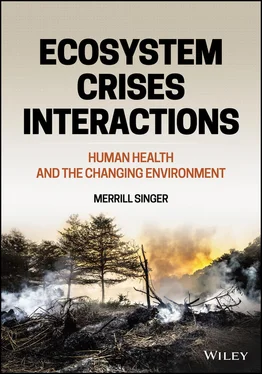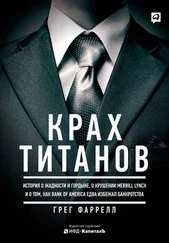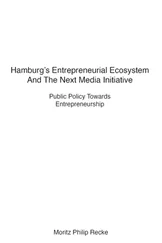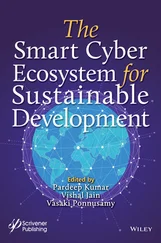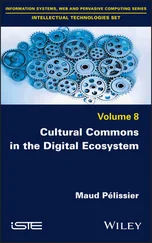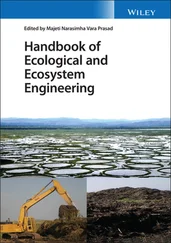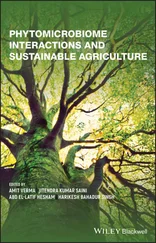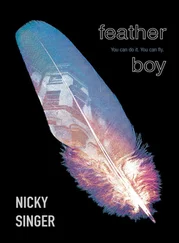11 Bump, P. (2015). Jim Inhofe’s snowball has disproven climate change once and for all. Washington Post. https://www.washingtonpost.com/news/the‐fix/wp/2015/02/26/jim‐inhofes‐snowball‐has‐disproven‐climate‐change‐once‐and‐for‐all/?utm_term=.3f254dbcb836.
12 Carmin, J. & Agyeman, J. (2011). Environmental Inequalities Beyond Borders: Local Perspectives on Global Injustices. Cambridge, MA: MIT Press.
13 CDC. (2017). Middle East Respiratory Syndrome (MERS). Centers for Disease Control and Prevention. https://www.cdc.gov/coronavirus/mers/index.html.
14 Chernomas, R. & Hudson, I. (2009). Social murder: the long‐term effects of conservative economic policy. International Journal of Health Services 39(1): 107–121.
15 Cho, R. (2018). Perspectives of scientists who become targets: Naomi Oreskes. Climate Science Legal Defense Fund Blog. https://www.csldf.org/2018/01/10/perspectives‐scientists‐become‐targets‐naomi‐oreskes/.
16 Christensen, J. (2019). Is it climate change or global warming? How science and a secret memo shaped the answer. CNN. https://www.cnn.com/2019/03/02/world/global‐warming‐climate‐change‐language‐scn/index.html.
17 Climate Central. (2012). Global Weirdness. Grand Haven, MI: Brilliance Audio.
18 Climate Central. (2018). The 10 hottest global years on record. https://www.climatecentral.org/gallery/graphics/the‐10‐hottest‐global‐years‐on‐record.
19 Climate Science Legal Defense Fund. (2019). Doxxing and death threats. No longer available online.
20 Cole, M. & Elliott, R. (2003). Determining the trade–environment composition effect: the role of capital, labor and environmental regulations. Journal of Environmental Economics and Management 46: 363–383.
21 Conway, M, (2018). Why environmental reporting is so intensely dangerous. Nonprofit Quarterly. https://nonprofitquarterly.org/why‐environmental‐reporting‐is‐so‐intensely‐dangerous/.
22 Costello, A., Abbas, M., Allen, A., Ball, S., Bell, S., Bellamy, R. et al. (2009). Managing the health effects of climate change. Lancet Commissions 373(9676): 1693–1733.
23 Crouse, D., Pinault, L., Balram, A., Hystad, P., Peters, P., Chen, H. et al. (2017). Urban greenness and mortality in Canada's largest cities: a national cohort study. Lancet Planetary Health 1(7): e289–e297.
24 Crutzen, P. (2002). Geology of mankind—the Anthropocene. Nature 415(6867): 23.
25 Crutzen, P. & Stoermer, E. (2000). The Anthropocene. Global Change Newsletter 41: 17–18.
26 DEA. (2018). Origin and history of Doctors for the Environment Australia (DEA). https://www.dea.org.au/history/.
27 Duhigg, C. (2009). Debating how much weed killer is safe in your water glass. New York Times. https://www.nytimes.com/2009/08/23/us/23water.html.
28 EcoHealth. (n.d.). About the EcoHealth Journal. https://ecohealth.net/en/.
29 Economic and Social Council. (2009). “The Earth does not belong to human beings; human beings belong to the Earth,” Permanent Forum hears as it takes up issues of climate change, land tenure. Press release. https://www.un.org/press/en/2009/hr4988.doc.htm.
30 Elbein, S. (2016). Cambodian journalists are dying trying to save the country's forests. Vice. https://www.vice.com/en_us/article/4w54nb/cambodian‐journalists‐are‐dying‐trying‐to‐save‐the‐countrys‐forests‐v23n6.
31 Fetherling, D. (2010). Mother Jones, the Miners’ Angel. Carbondale, IL: Southern Illinois University Press.
32 Finney, S. & Edwards, L. (2016). The “Anthropocene” epoch: scientific decision or political statement? GSA Today 26(2–3): 4–10.
33 Freedman, E. (2018). Why covering the environment is one of the most dangerous beats in journalism. The Conversation. https://theconversation.com/why‐covering‐the‐environment‐is‐one‐of‐the‐most‐dangerous‐beats‐in‐journalism‐105477.
34 Galgani, F., Leaute, J., Moguedet, P., Souplet, A., Verin, Y., Carpentier, A. et al. (2000). Litter on the sea floor along European coasts. Marine Pollution Bulletin 40(6): 516–527.
35 Galil, B., Golik, A. & Turkay M (1995). Litter at the bottom of the sea: a sea bed survey in the Eastern Mediterranean. Marine Pollution Bulletin 30(1): 22–24.
36 Gibbard, P. (2018). Formal Subdivision of the Holocene Series/Epoch. International Commission on Stratigraphy.
37 Graham, F. (2012). Fifty years after silent spring, attacks on science continue. YaleEnvironment360. https://e360.yale.edu/features/fifty_years_after_rachel_carsons_silent_spring_assacult_on_science:continues.
38 Hayes, T. (2008). The atrazine rap. https://www.youtube.com/watch?v=3MxrH4lN0‐A.
39 Horton, R. (2014). Reimagining the meaning of health. Lancet 384: 218.
40 Horton, R., Bealehole, R., Bonita, R., Raeburn, J., McKee, M. & Wall, S. (2014). From public to planetary health: a manifesto. Lancet 383: 847.
41 Howard, C. (2013). Pest control: Syngenta’s secret campaign to discredit Atrazine’s critics. 100 Reporters. https://100r.org/2013/06/pest‐control‐syngentas‐secret‐campaign‐to‐discredit‐atrazines‐critics/.
42 Hudson, S. (2001). Challenges for environmental education: issues and ideas for the 21st century: environmental education, a vital component of efforts to solve environmental problems, must stay relevant to the needs and interests of the community and yet constantly adapt to the rapidly changing social and technological landscape. BioScience 51(4): 283–288.
43 Hughes, T., Anderson, K. Connolly, S., Heron, S. & Kerry, J. (2018). Spatial and temporal patterns of mass bleaching of corals in the Anthropocene. Science 359(637): 80–83.
44 IAEH. (2019). The International Association for Ecology and Health (EcoHealth). https://www.springer.com/environment?SGWID=0‐198‐2‐454109‐0.
45 IDRC. (2008). Ecohealth works: environmental pollution. International Development Research Centre, Canada. https://www.idrc.ca/sites/default/files/sp/Documents%20EN/ecohealth‐works‐environmental‐pollution.pdf.
46 IDRC. (2010). Health in urban environments. International Development Research Centre, Canada. https://www.idrc.ca/en/research‐in‐action/health‐urban‐environments.
47 Inhofe, J. (2012). The Greatest Hoax: How the Global Warming Conspiracy Threatens Your Future. Medford, OR: WND Books.
48 Jamail, D. (2019). The End of Ice: Bearing Witness and Finding Meaning in the Path of Climate Disruption. New York: The New Press.
49 Jeftic, L., Sheavly, S. & Adler, E. (2009). Marine Litter: A Global Challenge. Nairobi: United National Environmental Program.
50 Kaufman, M. (2019). June was the warmest June ever recorded, but there's a bigger problem. Mashable. https://mashable.com/article/warmest‐june‐climate‐change‐trend‐2019/.
51 Kelly, J. & McDonald, F. (2018). A multimodal approach to the Anthropocene. American Anthropologist 120(3): 583–595.
52 Keune, H., Flandroy, L., Thys, S., De Regge, N., Mori, M., van den Berg, T, et al. (2017) European OneHealth/EcoHealth Workshop Report. Brussels: Belgian Community of Practice Biodiversity and Health, Belgian Biodiversity Platform.
53 Koch, P. & Barnosly, A. (2006). Late quaternary extinctions: state of the debate. Annual Review of Ecology, Evolution, and Systematics 37: 215–250.
54 Kuznets S. (1955). Economic growth and income inequality. American Economic Review 45(1): 1–28.
55 Landrigan, P., Fuller, R., Acosta, N., Adeyi, O., Arnold, R., Basu, N. et al. (2018). The Lancet Commission on Pollution and Health. Lancet 391(10119): 462–512.
56 Leopold, A. (1949). A Sand County Almanac. New York: Oxford University Press.
57 Lerner, H. & Berg, C. (2017). A comparison of three holistic approaches to health: One Health, EcoHealth, and Planetary Health. Frontiers in Veterinary Science 4.
Читать дальше
